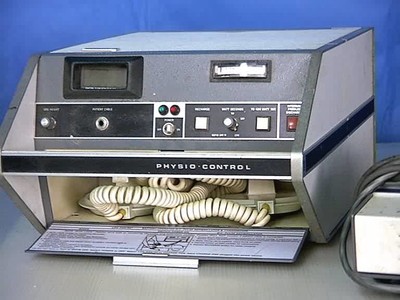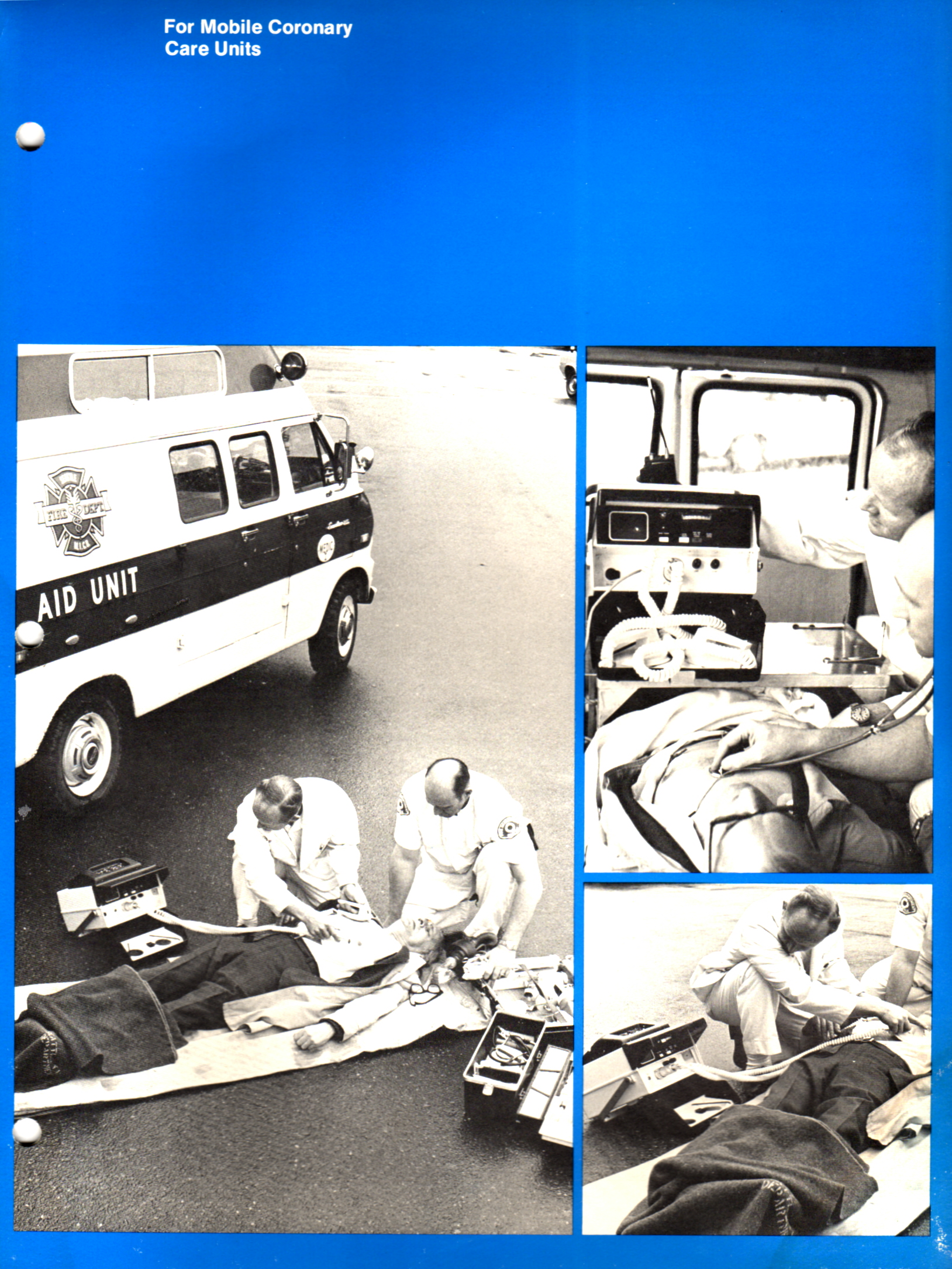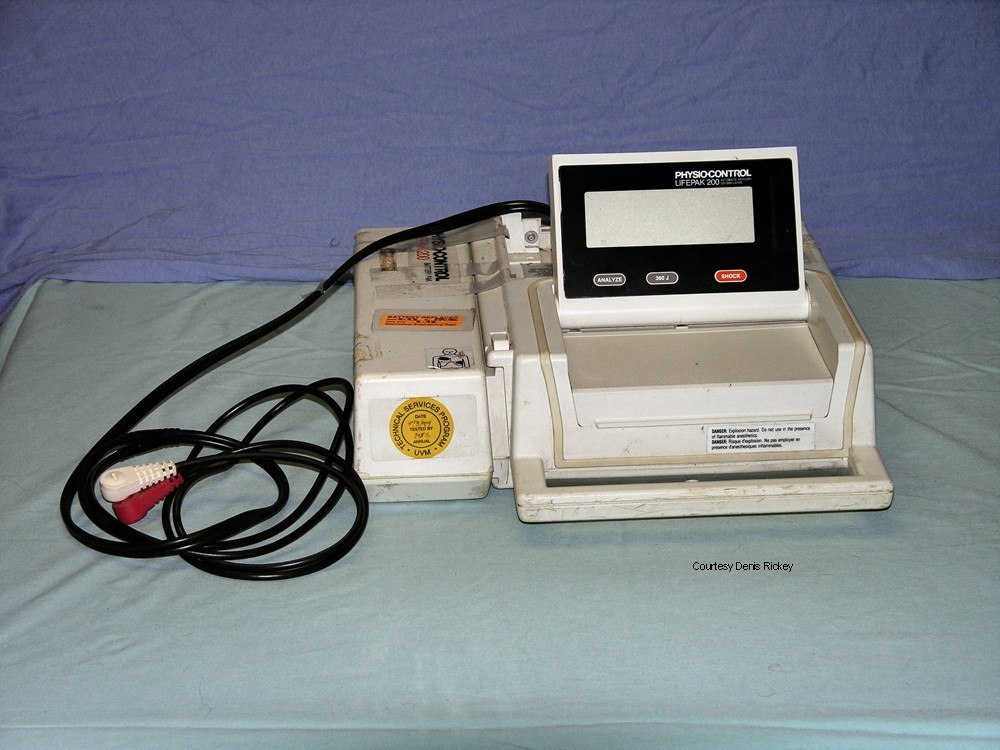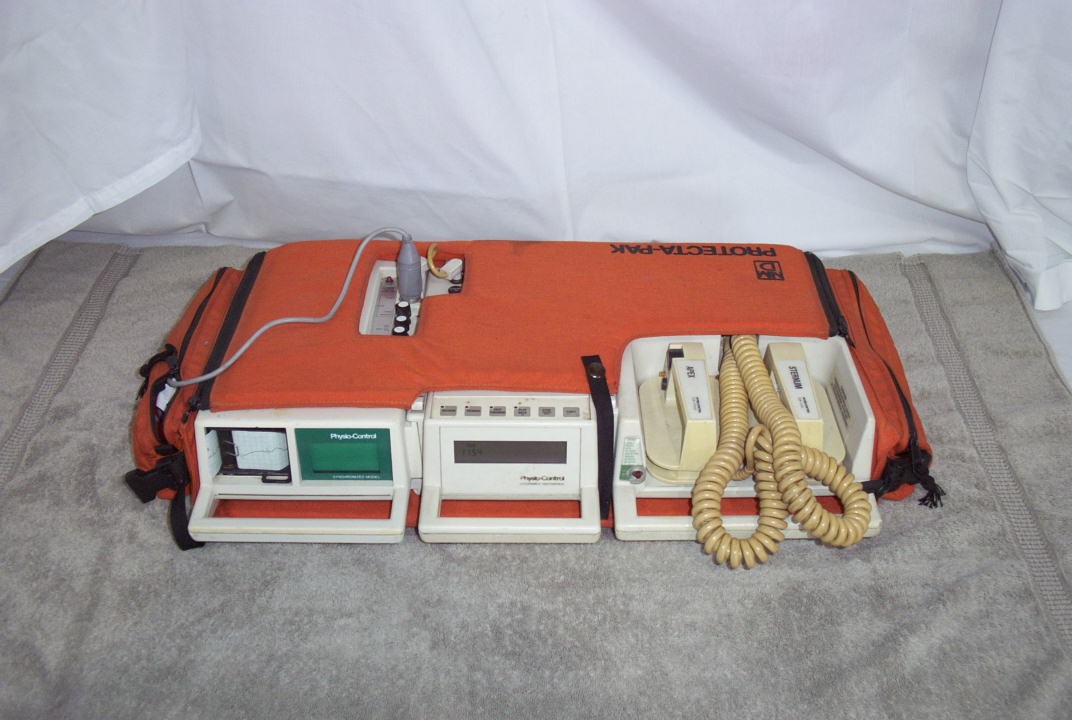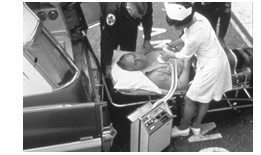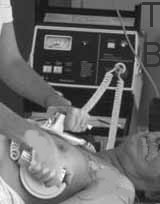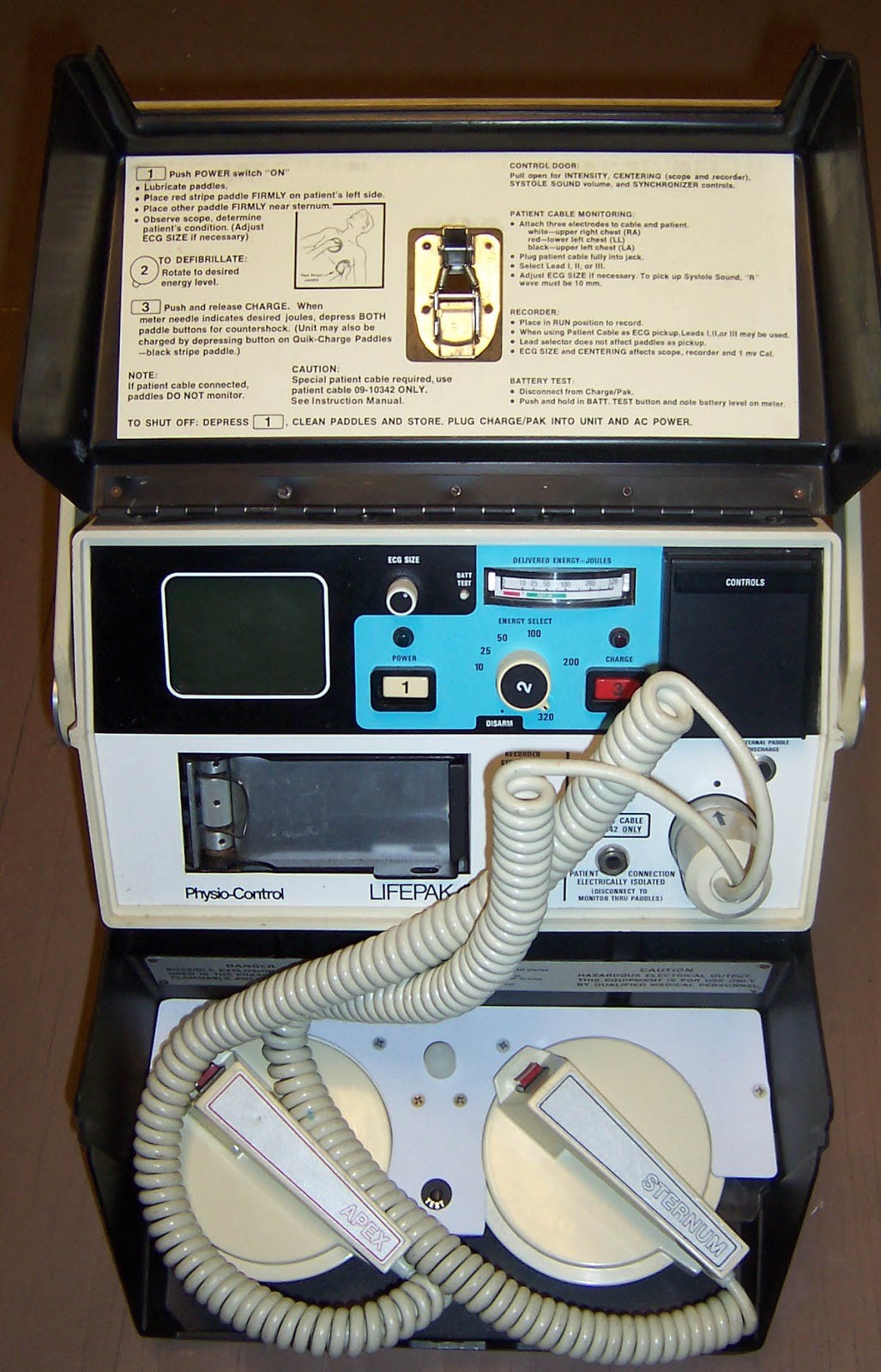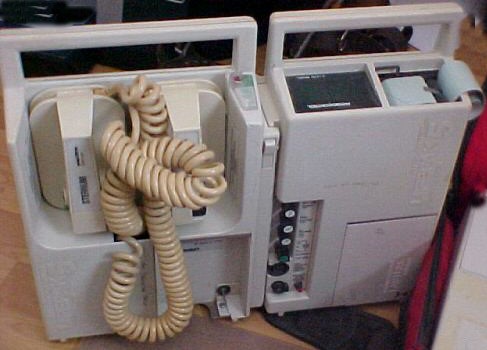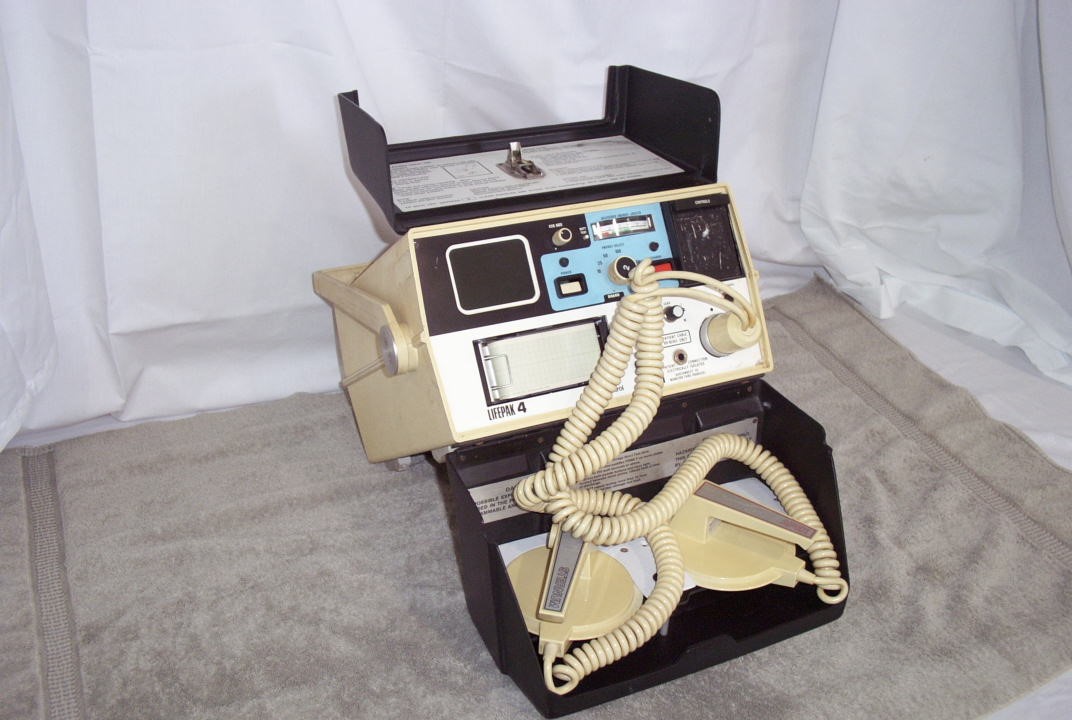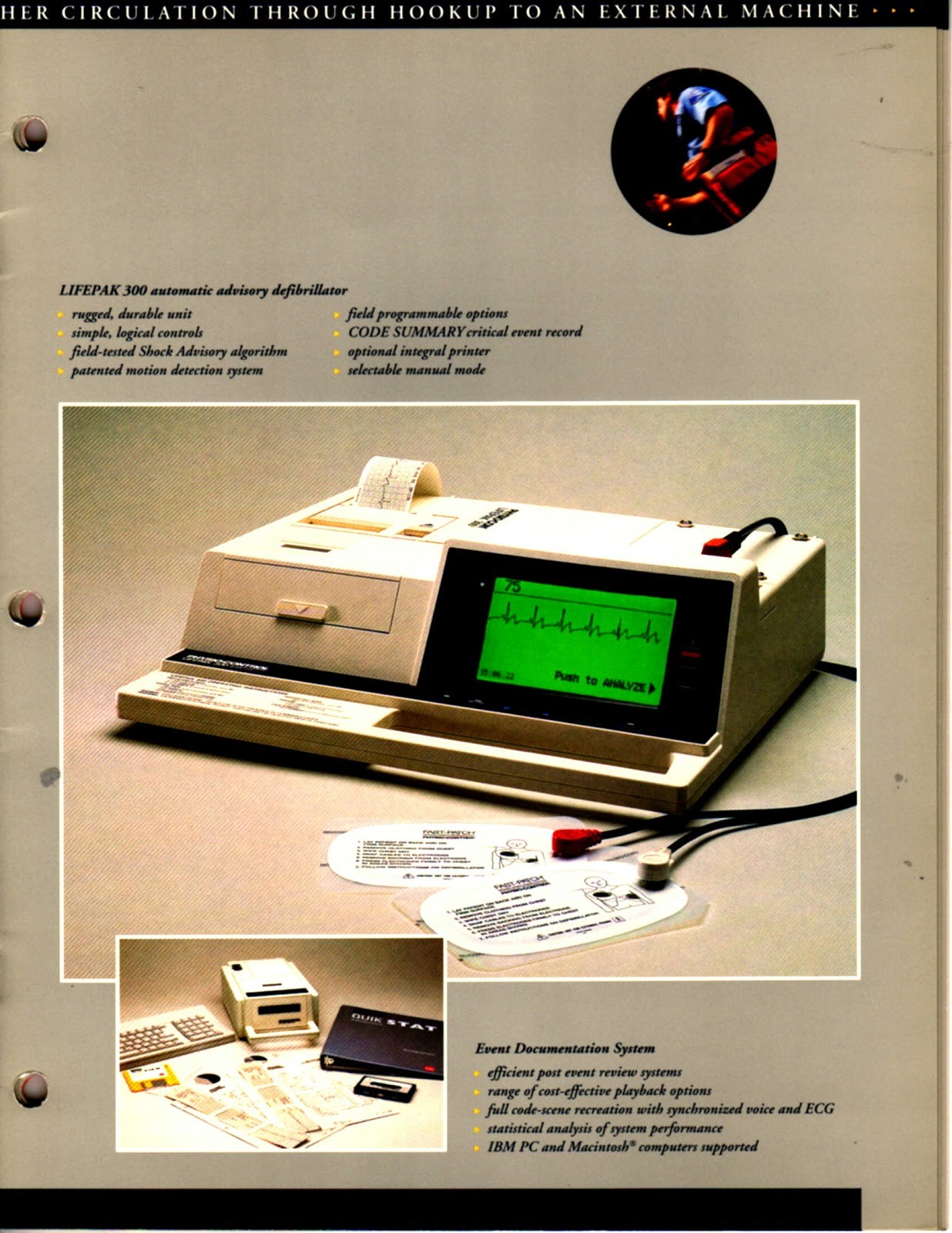National EMS Museum Resources
Background
In 1968 Physio-Control released it’s “90 day wonder” the LifePak 33 portable defibrillator. This defibrillator would launch a series of models that would change the way pre-hospital care was delivered forever. By 1967, Physio-Control, founded by Seattle surgeon Dr. Karl Edmark, had a decade of work into designing and developing defibrillation units to be used in hospitals to respond to sudden cardiac events in the hospital wards. Dr. Edmark worked to develop a unit that would detect the patient’s heartbeat as well as deliver a life stimulating DC charge to jump start the heart in the event of an emergency. In 1961 the first successful DC defibrillation took place with Dr. Edmarks “Breadboard” pulse defibrillator. This event charted a course for Dr. Edmark and his company into the future.
By 1968, Physio-Control was one of the leading innovators in the field of defibrillator development. The LifePak 33 was the first of a long line of LifePak defibrillators and was the first truly portable and stand alone defibrillator and integrated monitor. What is really remarkable about the LifePak 33 is that it was conceived, designed, developed and tested in three months, making it one of the fastest produced medical devise on the market at the time.
LifePak 33 was named as a nod to the 33 pound target weight for the unit, with other companies quickly closing the ranks on portable defibrillators “it was all about marketing” when the product launched and the 33 pound unit became a standard issue in many services across the country.
Credit Line
The National EMS Museum Collection
Memories
Share your memories of the the LifePak with us!
Shoot us an email at info @ emsmuseum.org or drop us a message on our Social Channels
I remember carry the “33” for 4 years. It was very heavy, especially when going up 5 flights of stairs with a D tank of O2. And the paddles had a very narrow insulator around the electrodes. This made it real easy to get, “Bit” when using it.

